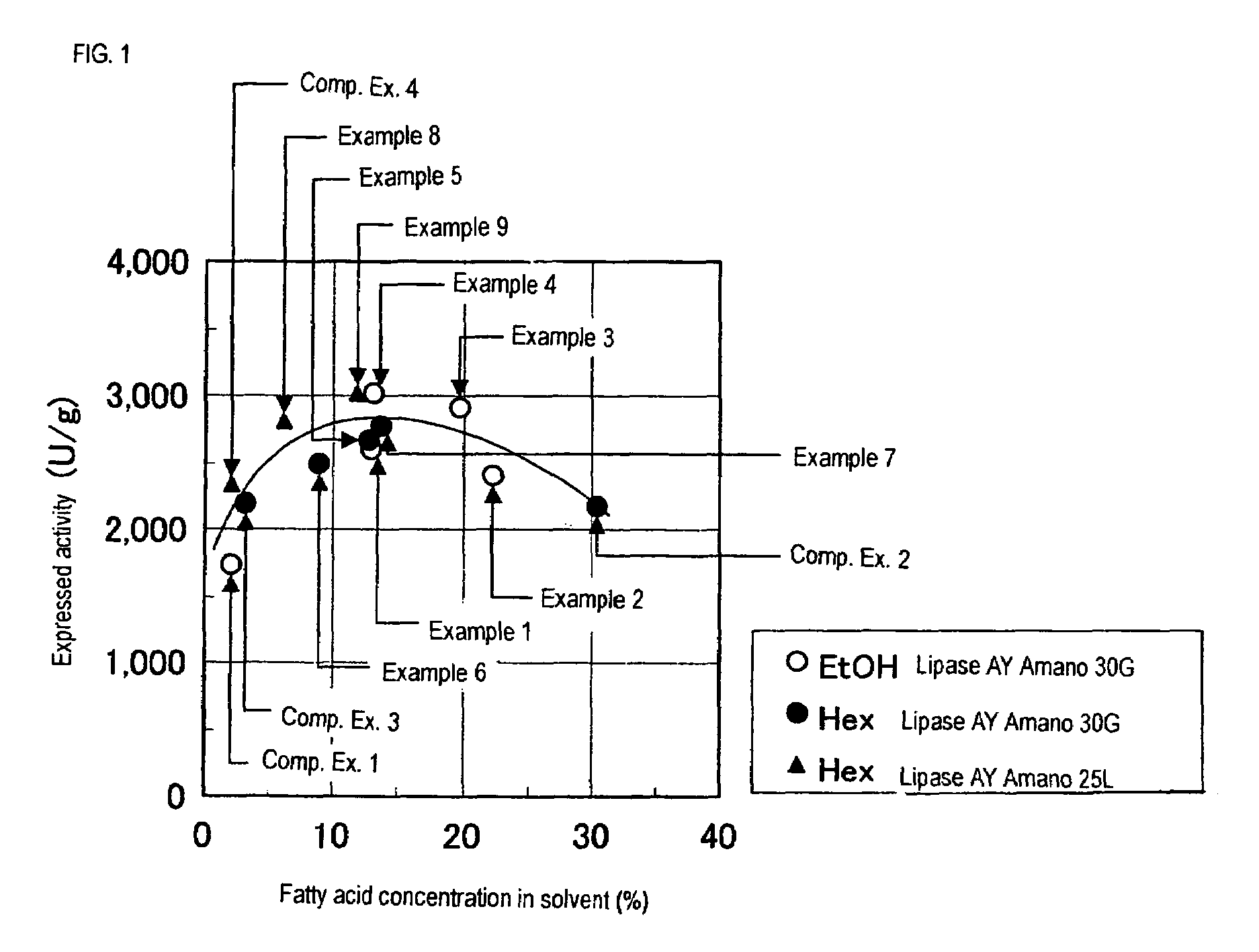Regenerating method of immobilized enzyme
- Summary
- Abstract
- Description
- Claims
- Application Information
AI Technical Summary
Problems solved by technology
Method used
Image
Examples
example 1
[0025]Ethanol (72 parts by weight) was added to 10 parts by weight (dry weight) of a spent immobilized enzyme having a residual activity of 770 U / g to disperse the immobilized enzyme in the ethanol. The resulting dispersion was stirred for 30 minutes. The fatty acid concentration in the washing liquid after stirring was 12.9 wt. %. After filtration, the immobilized enzyme was washed four times, each with 50 parts by weight of a 50 mM phosphate buffer (pH 7) for 30 minutes, to remove ethanol and the residue was filtered to recover the immobilized enzyme. Then, the immobilized enzyme was brought into contact with an enzyme solution obtained by dissolving 3.88 parts by weight of lipase (“Lipase AY Amano 30”, trade name; product of Amano Enzyme Inc.) in 180 parts by weight of a 50 mM phosphate buffer (pH 7) for 2hours to immobilize the enzyme onto the immobilized enzyme. The immobilization ratio at this time was determined from the difference between the residual activity of the enzyme ...
example 2
[0027]In a manner similar to that in Example 1 except that ethanol was added in an amount of 40 parts by weight, an immobilized enzyme was regenerated. As a result, the fatty acid concentration in the washing liquid was 22.3 wt. %, the immobilization ratio of the enzyme was 73.1% and the expressed activity of the immobilized enzyme after regeneration was 2,401 U / g.
example 3
[0028]In a manner similar to that in Example 1 except that a spent immobilized enzyme had a residual activity of 800 U / g and ethanol was added in an amount of 40 parts by weight, an immobilized enzyme was regenerated. As a result, the fatty acid concentration in the washing liquid was 19.7 wt. %, the immobilization ratio of the enzyme was 70.9% and the expressed activity of the immobilized enzyme after regeneration was 2,910 U / g.
PUM
| Property | Measurement | Unit |
|---|---|---|
| Temperature | aaaaa | aaaaa |
| Temperature | aaaaa | aaaaa |
| Particle size | aaaaa | aaaaa |
Abstract
Description
Claims
Application Information
 Login to View More
Login to View More - R&D
- Intellectual Property
- Life Sciences
- Materials
- Tech Scout
- Unparalleled Data Quality
- Higher Quality Content
- 60% Fewer Hallucinations
Browse by: Latest US Patents, China's latest patents, Technical Efficacy Thesaurus, Application Domain, Technology Topic, Popular Technical Reports.
© 2025 PatSnap. All rights reserved.Legal|Privacy policy|Modern Slavery Act Transparency Statement|Sitemap|About US| Contact US: help@patsnap.com

